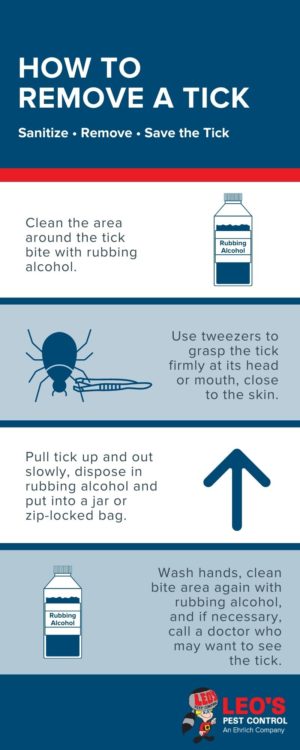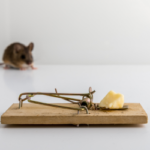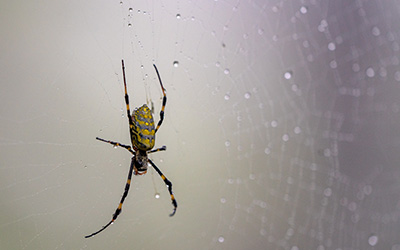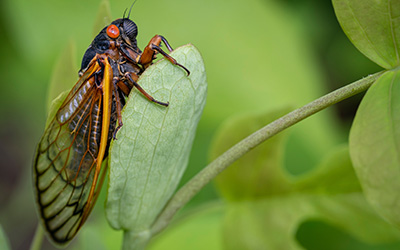
In the spring and summertime, ticks are not only one of the most common pests but also the most dangerous. Ticks are infamous for transmitting a number of diseases, namely Lyme disease. The good news is that this transmission is rare: only deer ticks can transmit it, and only some deer ticks are carriers of the disease. However, because there is a risk of tick-borne illness, it’s crucial to learn about safely removing ticks.
May is National Lyme Disease Awareness Month. The experts at Leo’s Pest Control are here to share a guide to safely removing ticks from you,a pet, or a family member. Keep reading to learn more!
Lyme Disease & Ticks
Certain deer ticks, also known as blacklegged ticks, carry and spread Lyme disease. These tiny parasitic insects can and will attach to any part of the body but are often found in the groin, scalp, and armpits. Unfortunately, most people are infected through the bites of nymph ticks, who feed in the spring and summertime.
The good news is that when a tick is safely removed within the first 24 hours, the chances of contracting a tick-borne illness are low. It is only when an infected tick has been attached for 36–48 hours can the bacterium be transmitted. You can protect yourself from the potential dangers of a tick bite by learning how to remove and dispose of the tick.
 Tick Removal Guide
Tick Removal Guide
When it comes to removing a tick, tweezers are the best tool. In fact, the following method is backed by the CDC and the ASPCA. Safely removing ticks is best done by adhering to the following steps:
- Grab a pair of fine-tipped tweezers. Carefully pull back any hair from the skin surrounding the tick.
- Firmly grasp the head or mouth of the tick with tweezers, as close to the skin as possible. Avoid grasping the tick’s body to the best of your ability, as this could inject the tick’s blood into the skin.
- Firmly and steadily pull the tick outward in a straight motion. Try to not twist the tweezers, as this could dislodge the head, leaving it embedded in your skin.
- As soon as the tick is removed, carefully clean the area of the bite, as well as your hands, with soap and water.
- To safely dispose of the tick, place it in a sealed bag or jar with alcohol. Another option is to flush the tick down the toilet. Do not crush the tick.
If you begin to notice a rash developing or any other symptoms after removing a tick, get in touch with your doctor immediately.
Professional Tick Control in Bristol TN
Ticks may be tiny, but they are one of the most dangerous pest problems. Learning how to prevent ticks and how to safely remove them in a timely manner is the key to staying safe from tick-borne illnesses. The experts at Leo’s Pest Control are here to answer any questions you may have about ticks—contact us today!
Guide to Safely Removing Ticks in Bristol TN
Serving Tennessee & Virginia





